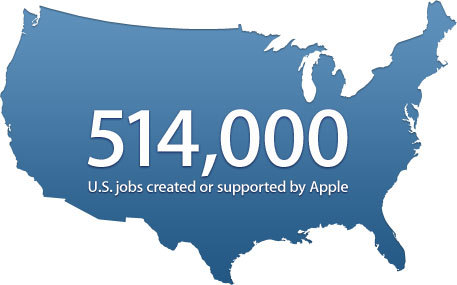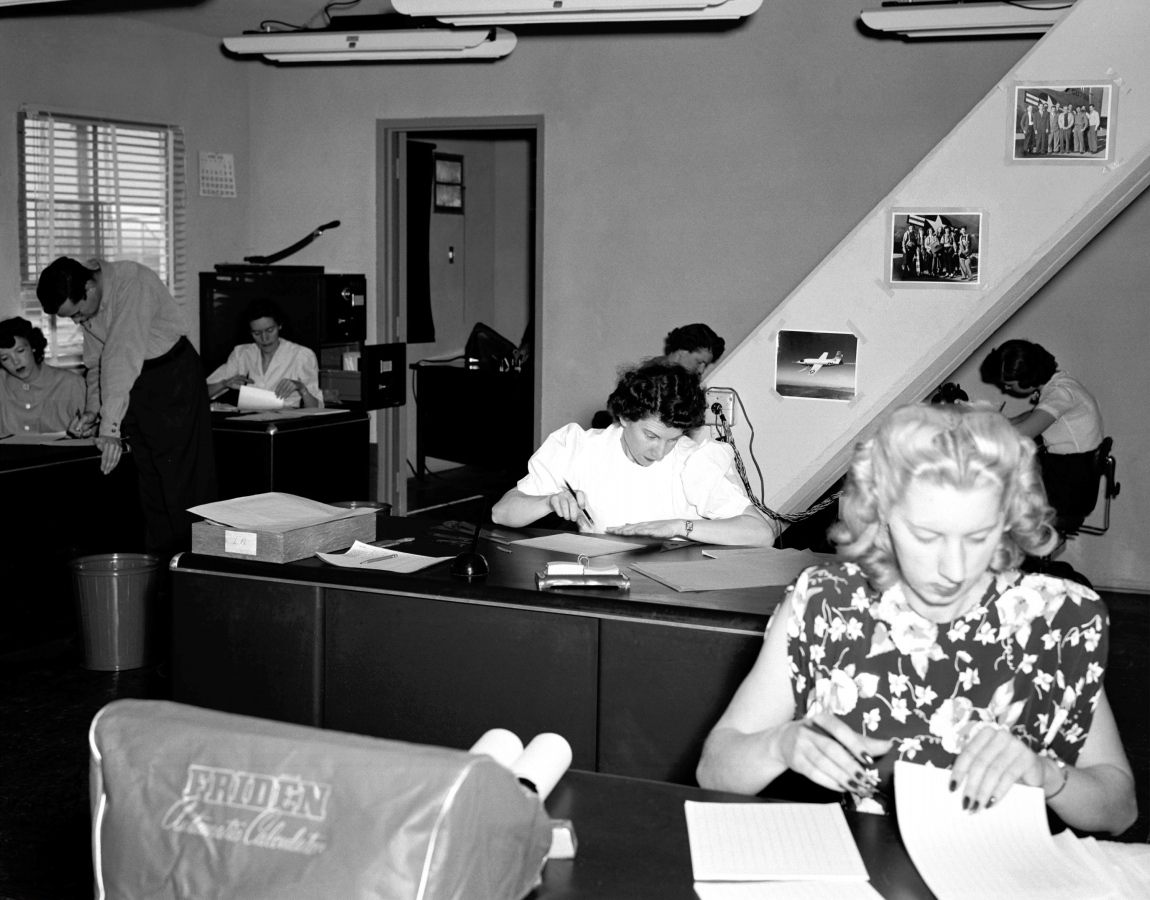
A colleague sent me a link an InfoWorld1 article about Apple entitles Apple’s big lie about job creation, and other bogus claims.
Go read the article and them come back. Ok, done wasting your time?
Now go read Apple’s report. Looking at those charts it would seem that 200,000 people chose to create their own job developing apps and I expect just as many are doing the same for the Android platform.
According to Microsoft as of Dec. 31, 2011 it employed approximately 92,303 people — 55,002 in the U.S.. That’s only about 10,000 more than Apple. How many jobs were created as part of the Microsoft eco-system?
From NPR
University of California, Berkeley economist Enrico Moretti has written a book about this kind of indirect job creation. He says Apple’s total job creation estimate is too high — the real total is somewhere between 300,000 and 400,000.
Fair enough.
I won’t debate details but I don’t believe companies create jobs – customers do. Companies develop products or services. If those products or services are successful – meaning customers find the product or service valuable and are willing to pay – the companies can hire more workers to expand their market (or not). If the products or services are not successful – customers find the product or service lacking and aren’t willing to pay – then companies reduce staff or try to improve the product. Before you grow a successful company you must have a successful product or service.
These days it seems that most successful companies want to hire [highly trained employees]9http://businessroundtable.org/studies-and-reports/getting-ahead-executive-summary1/).
More good stuff from NPR on the future of manufacturing jobs
ALAN: Hi there, yeah. Actually, I’m trying to - I have a product, a new product. I’m an entrepreneur, product developer, and I desperately want to be able to make my product here in the USA. I’ve gotten figures from China, and I’m - I’ve also gotten figures from the USA. And a few things that I’m noticing are I’m 50 to 60 thousand apart. In the U.S. it’s more expensive for the tooling. I also know that for my product in particular, which is relatively small, handheld, it’s going to cost me about a dollar per unit just to get it here from China to - and that’s just to the East Coast or the West Coast.
Then I’ve got to do some shipping to get it to, you know, a fulfillment house. Also, it’s going to cost me more money for insurance if I make it in China rather than the USA. And the time, it takes about six weeks minimum to get something shipped from China to the U.S. So for many reasons, I desperately want to make this in the USA, and I’m trying to figure out how to do that. You know, I’ve got good numbers. You know, I’m getting closer, but I’m still maybe $70,000 difference by making it in the USA. So questions are: Are the American people willing and other people willing to pay more for something that’s made in the USA?
I’d say from American buying behavior, the answer is “no”.
More good stuff I found via NPR
Manufacturers have been a big source of that hiring. The sector accounts for only about 9 percent of total payrolls but added 13 percent of the new jobs last year. In January, they accounted for one-fifth of the 243,000 net jobs added.
Excerpt from long but good article from the Atlantic about American manufacturing
…. Maddie has a job for two reasons. First, when it comes to making fuel injectors, the company saves money and minimizes product damage by having both the precision and non-precision work done in the same place. Even if Mexican or Chinese workers could do Maddie’s job more cheaply, shipping fragile, half-finished parts to another country for processing would make no sense. Second, Maddie is cheaper than a machine. It would be easy to buy a robotic arm that could take injector bodies and caps from a tray and place them precisely in a laser welder. Yet Standard would have to invest about $100,000 on the arm and a conveyance machine to bring parts to the welder and send them on to the next station. As is common in factories, Standard invests only in machinery that will earn back its cost within two years. For Tony, it’s simple: Maddie makes less in two years than the machine would cost, so her job is safe—for now. If the robotic machines become a little cheaper, or if demand for fuel injectors goes up and Standard starts running three shifts, then investing in those robots might make sense.
“What worries people in factories is electronics, robots,” she tells me. “If you don’t know jack about computers and electronics, then you don’t have anything in this life anymore. One day, they’re not going to need people; the machines will take over. People like me, we’re not going to be around forever.
Apple should just bring back the manufacturing jobs, pay a fair US wage and then watch while HP/Dell (who also make their products in China) undercut their prices (considering that they all make their stuff at the same manufacturers). That will surely make shareholders happy.



